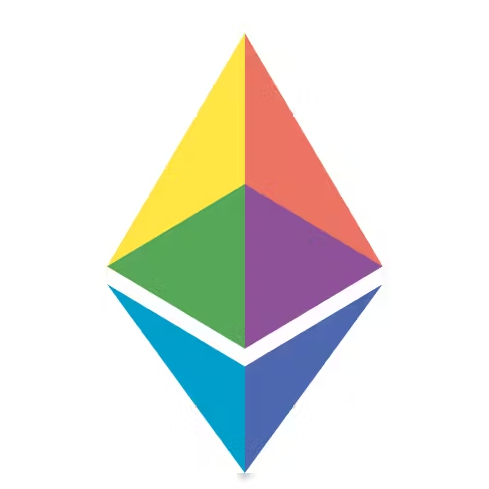Overview of EVM-Compatible ZK Rollup Network Zircuit
Author: Zen, PANews
In April, the staking program launched by the EVM-compatible ZK Rollup network Zircuit saw significant growth, with its TVL increasing from $1.1 billion to a peak of $2.8 billion during the month. According to data from DefiLlama, as of May 6, there have been $3.2 billion in deposits into Zircuit staking.
What is Zircuit?
Zircuit is developed by a team that has received multiple research grants from the Ethereum Foundation and is supported by Pantera Capital and Dragonfly Capital. On November 9 last year, the Zircuit public testnet officially went live, fully compatible with EVM, meaning Ethereum applications can be seamlessly deployed on this network without the need to learn new programming languages or frameworks. This compatibility allows users to enjoy the new features, speed, and cost advantages of these dApps without having to learn anything extra.
In February this year, Zircuit launched its staking program, gradually coming into the public eye. It allows users to earn rewards, including staking APR, re-staking APR, Eigenlayer points, LRT points, and Zircuit points, by staking ETH, liquid staking tokens (LST), and liquidity re-staking tokens (LRT). Currently, Zircuit has partnered with star projects such as Ethena, Ether.fi, Renzo, EigenLayer, Lido, and Swell. Unlike hard-locking methods like Blast and Mantle, Zircuit allows users to withdraw at any time while retaining earned points and rewards, similar to a savings account.
Currently, Zircuit is still in the testnet phase, with its mainnet expected to launch as early as this summer. Based on airdrop expectations, users can participate in testnet testing, engage in "Build to Earn", or join its staking program to earn Zircuit points by staking ETH and its derivatives, as well as participating in various tasks to receive token rewards in the future.

Core Feature: Sequencer Level Security
Zircuit itself is the Ethereum ZK Layer 2, and its main innovation is the introduction of the concept of Sequencer Level Security (SLS). This mechanism aims to provide enhanced security guarantees, ensuring that users' assets and data are fully protected during transactions on the Layer 2 blockchain, preventing malicious transactions and hacker attacks. Additionally, its design minimizes the impact on sequencer performance, especially on serialization throughput and latency, to maintain the network's efficiency and responsiveness. Its transparent operational mechanism allows the state of the blockchain to be clearly defined and derived, ensuring the network's predictability and stability.
Specifically, Zircuit's sequencer monitors the Mempool (the collection of transactions not yet packed into blocks) for malicious detection, and SLS determines whether a transaction has malicious intent based on specific algorithms or techniques. If a transaction is deemed malicious, it will be placed in an isolation zone and temporarily excluded from being included in a block. It can only be considered for inclusion in a block once the release conditions are met and its legitimacy is verified. SLS can also employ a hybrid parallel-sequential approach for malicious detection to optimize detection speed and accuracy. It combines parallel simulation at the chain tip and sequential simulation within blocks to fully leverage their respective advantages.
In addition to SLS, another feature of Zircuit is the use of proprietary proof aggregation technology, which decomposes circuits into fast parallel processes to improve processing speed and efficiency.
Hybrid Architecture of ZK Rollup
By combining proven Rollup infrastructure with zero-knowledge proof technology, Zircuit adopts a hybrid architecture-based ZK Rollup solution. Its architecture includes sequencers responsible for processing transactions to build L2 blocks, provers for generating validity proofs for these blocks, and smart contracts that interact with the system on L1.
Zircuit's transaction flow can be initiated from L1 or directly from L2. Transactions are processed through Rollup nodes (including sequencers, execution engines, and batch processors), where the sequencer instructs the execution engine on which transactions to include in a block, and the batch processor submits L2 transaction batches to L1 to achieve complete data availability. The execution engine processes the transactions in the batch and generates new L2 states. These L2 blocks are then handled by Zircuit's proof generators, each with a specific role to achieve rapid proof generation and verification.
In terms of deposits, withdrawals, and transactions, deposit transactions involve bridging assets such as ETH or ERC-20 tokens from Ethereum to Zircuit, while L2 transactions are initiated on Zircuit, such as transferring ETH between accounts or calling smart contracts on Zircuit. These transactions are processed by Rollup nodes and ultimately included in L2 blocks, which are then confirmed for legitimacy through proofs. Withdrawal transactions extract assets (such as ETH) from Zircuit to L1, initiated by sending L2 transactions to the L2 standard bridge smart contract. Once these transactions are included in L2, the relevant proofs will be used to complete the withdrawal process on L1, ensuring that the withdrawal account has sufficient assets.













